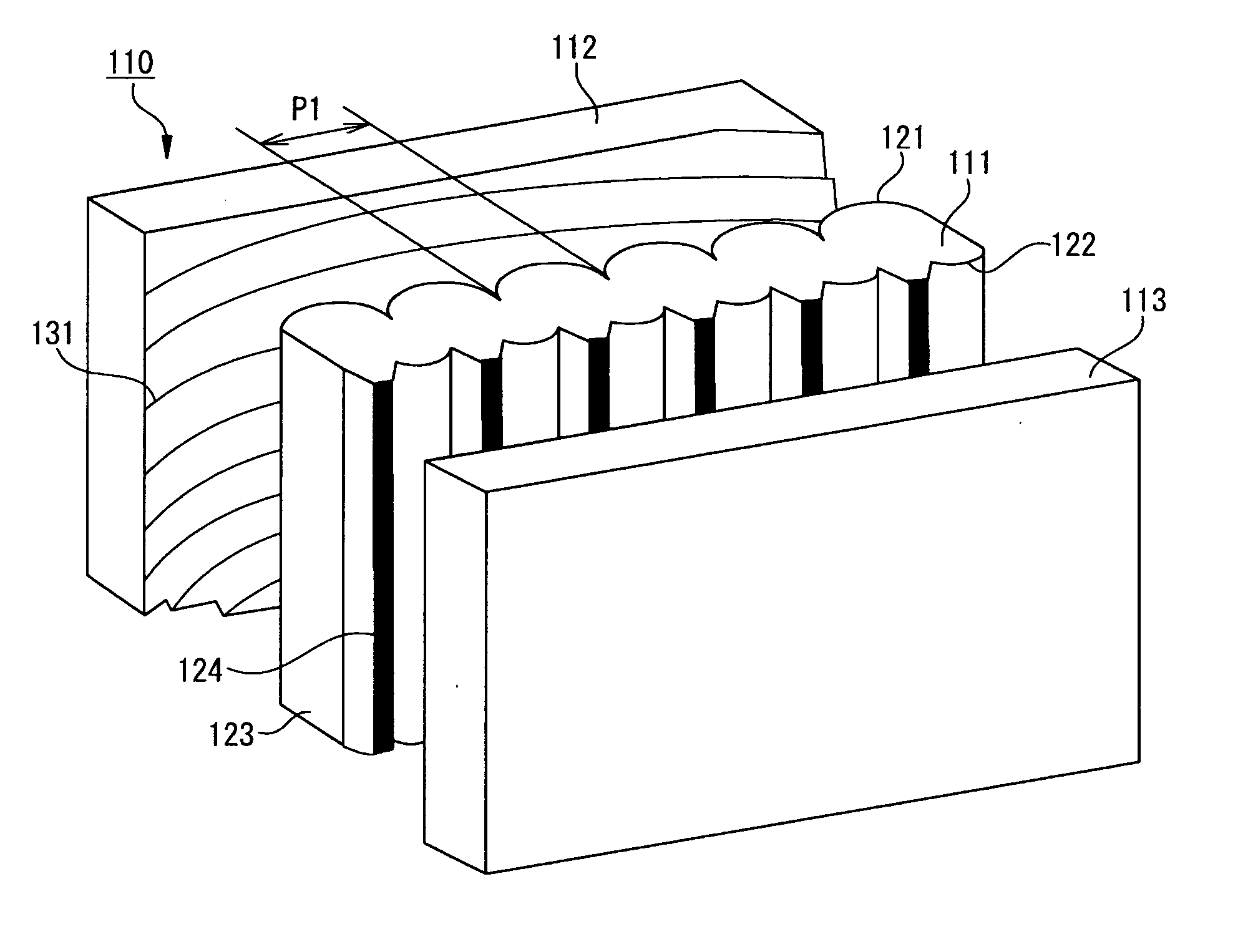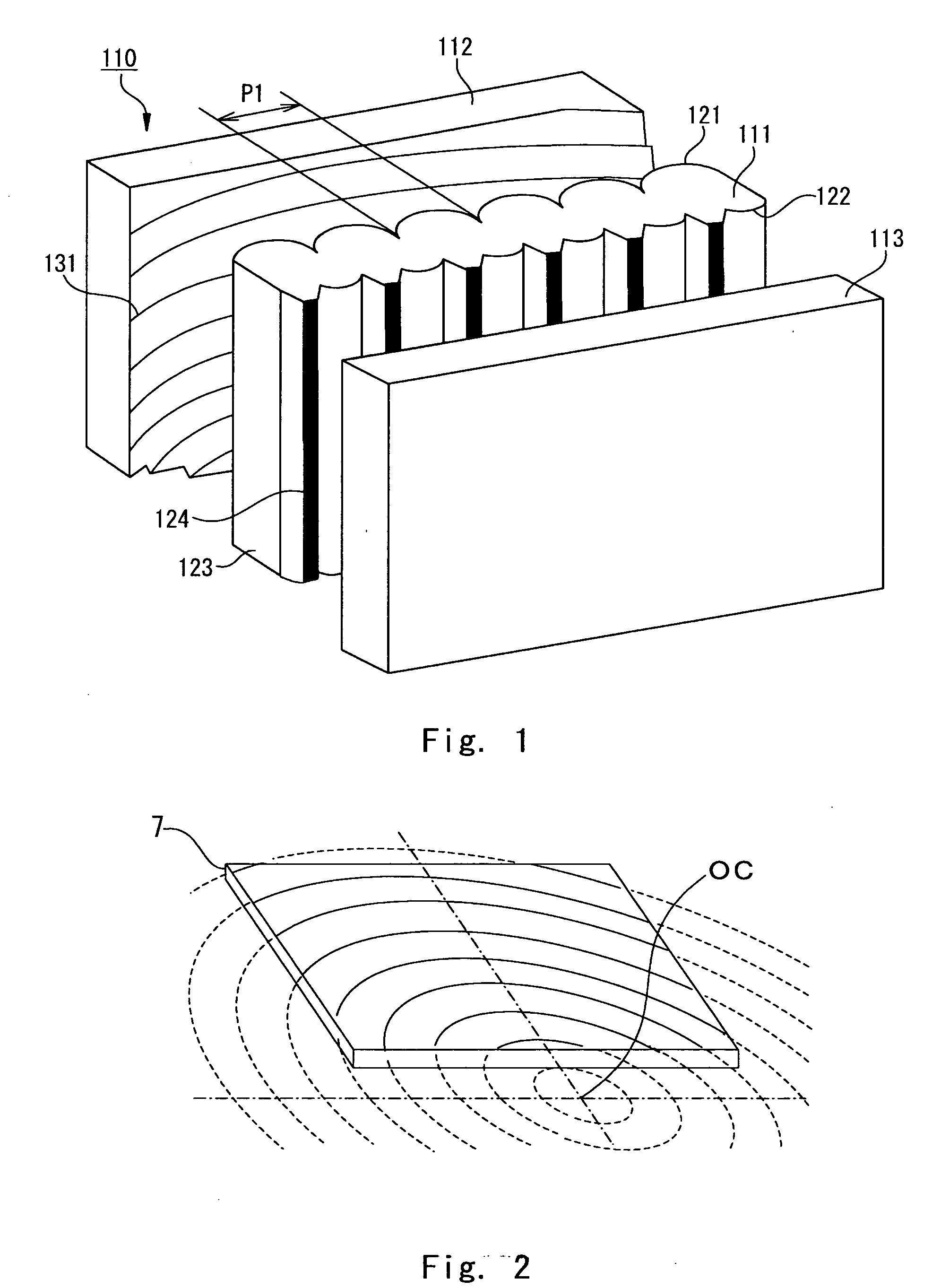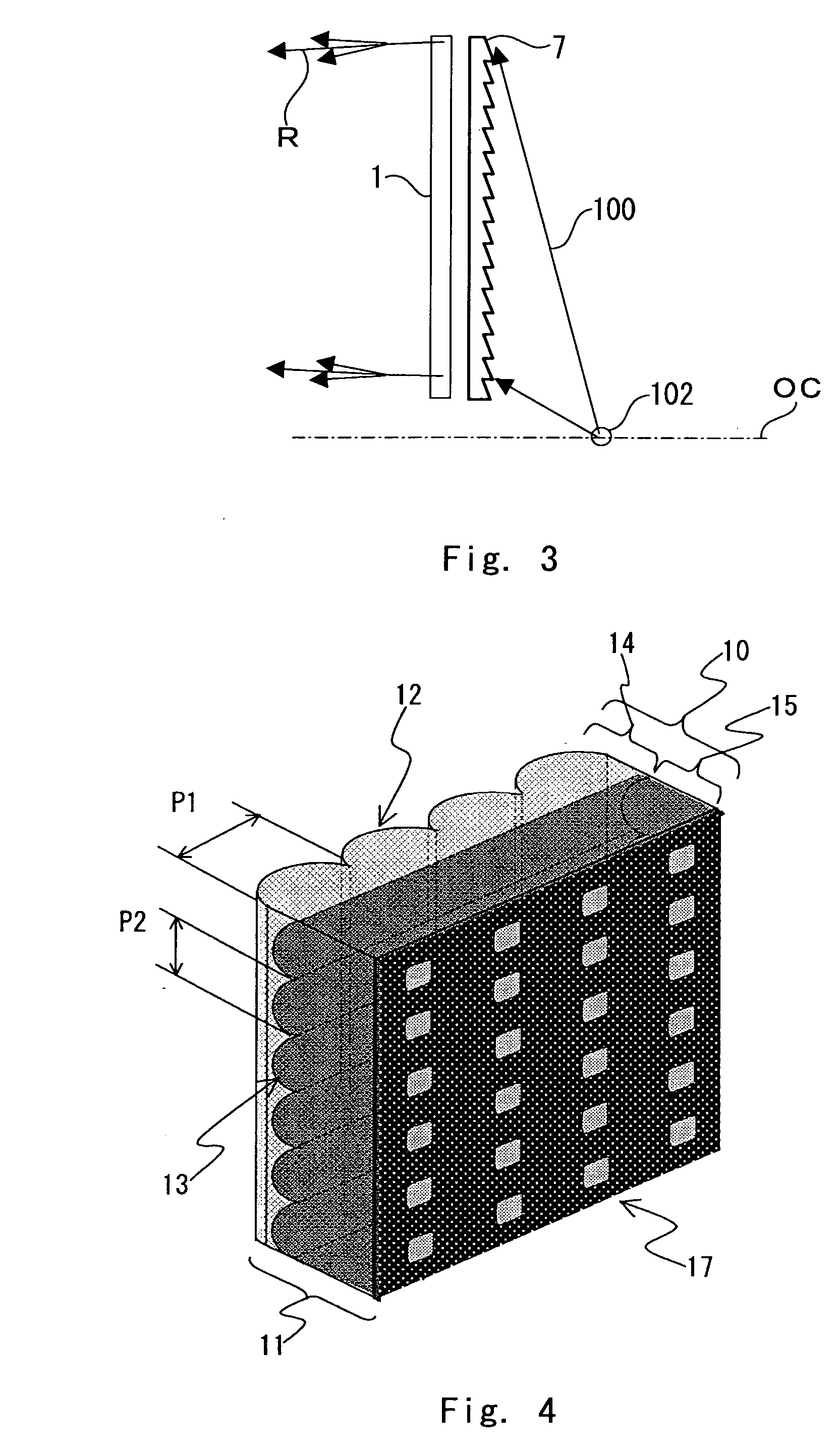Back projection-type screen and back projection-type projection device
- Summary
- Abstract
- Description
- Claims
- Application Information
AI Technical Summary
Benefits of technology
Problems solved by technology
Method used
Image
Examples
first embodiment
[0064]FIG. 1 is a perspective view showing a partial structure of a rear projection-type screen according to a first embodiment of the present invention. The rear projection-type screen 110 includes a lenticular lens sheet 111, a Fresnel lens sheet 112, and a front panel 113. The rear projection-type screen 110 is made up of the Fresnel lens sheet 112, the lenticular lens sheet 111, and the front panel 113 which are arranged in this order from the top to the bottom of the figure.
[0065] The lenticular lens sheet 111 is formed of a translucent substrate, on which a plurality of lenticular lenses 121 are formed on the surface on which projected light is incident. The lenticular lenses 121 are formed on the incident side of the surface through which the projected light is output from the lenticular lens sheet 111. Specifically, the lenticular lenses 121 are a plurality of convex lens arrays which are placed on the front side (incident side) when viewed from the light incident plane sid...
second embodiment
[0083]FIG. 4 is a perspective view showing the structure of a main part of a lenticular lens sheet according to a second embodiment of the present invention. In the following description regarding the lenticular lens sheet, the structure which does not include a self-aligned external light absorption layer 17 is referred to as a lenticular lens sheet A (which is denoted by the reference numeral “10”), and the structure which includes the lenticular lens sheet A and the self-aligned external light absorption layer 17 is referred to as a lenticular lens sheet B (which is denoted by the reference numeral “11”).
[0084] The lenticular lens sheet A is made up of a combination of a first lens layer 14 and a second lens layer 15 having different refractive indexes from each other which are integrated together with a second lens array 13 placed therebetween as an interface. In the second embodiment of the present invention, the refractive index of the first lens layer 14 is lower than the re...
third embodiment
[0125]FIG. 6 is a perspective view showing the structure of the main part of the lenticular lens sheet according to a third embodiment of the present invention.
[0126] The third embodiment is different from the second embodiment in the lenticular lens sheet A that a transparent base 21 is placed on the light exit side of the second lens layer 15 and the self-aligned external light absorption layer 17 is placed on the light exit surface of the transparent base 21. The other structure is the same as that of the second embodiment and thus not described herein.
[0127] The transparent base 21 may be an acrylic resin film, MS resin film, PET film, or the like.
[0128] Because the lenticular lens sheet according to the third embodiment of the present invention has the self-aligned external light absorption layer 17 on the light exit surface of the transparent base 21 which includes the first lens array 12 and the second lens array 13 arranged perpendicular to each other, the self-aligned ex...
PUM
 Login to View More
Login to View More Abstract
Description
Claims
Application Information
 Login to View More
Login to View More - R&D
- Intellectual Property
- Life Sciences
- Materials
- Tech Scout
- Unparalleled Data Quality
- Higher Quality Content
- 60% Fewer Hallucinations
Browse by: Latest US Patents, China's latest patents, Technical Efficacy Thesaurus, Application Domain, Technology Topic, Popular Technical Reports.
© 2025 PatSnap. All rights reserved.Legal|Privacy policy|Modern Slavery Act Transparency Statement|Sitemap|About US| Contact US: help@patsnap.com



